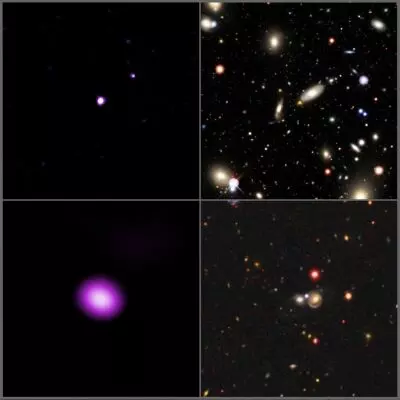
Chandra observatory of NASA aids in uncovering previously buried black holes
text_fieldsWashington: Astronomers will be able to more accurately count the number of black holes in the universe thanks to the hundreds of previously hidden black holes that NASA's Chandra X-ray Observatory has managed to uncover.
A group of astronomers was able to locate hundreds of previously undiscovered black holes by combining optical data from the Sloan Digital Sky Survey (SDSS) with data from the Chandra Source Catalog, a public database containing hundreds of thousands of X-ray sources discovered by the observatory over its first 15 years.
They are in galaxies not previously identified to contain quasars, extremely bright objects with rapidly growing supermassive black holes.
"Astronomers have already identified huge numbers of black holes, but many remain elusive. Our research has uncovered a missing population and helped us understand how they are behaving," said Dong-Woo Kim of the Center for Astrophysics|Harvard & Smithsonian (CfA), who led the study.
The black holes in the new study are the supermassive variety that contains millions or even billions of times the mass of the Sun.
For about 40 years scientists have known about galaxies that look normal in optical light but shine brightly in X-rays.
They refer to these objects as "X-ray bright optically normal galaxies" or "XBONGs".
With Chandra's help, the researchers identified 817 XBONG candidates, more than 10 times the number known before Chandra was in operation.
"The Chandra Source Catalog is a growing treasure that will help astronomers make discoveries for years to come," said co-author Amanda Malnati, an undergraduate student at Smith College in Northampton, Massachusetts.
The team concluded that about half the XBONG candidates involve X-ray sources that are buried under thick gas because relatively small amounts of low-energy X-rays were detected.
These black holes range in distances between 550 million and 7.8 billion light-years from Earth.
With inputs from IANS























